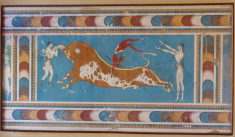Speaker
Description
We review our studies of spectator-induced electromagnetic (EM) effects on charged pion and kaon emission in nucleus-nucleus collisions at CERN SPS and RHIC BES energies. These are found to consist in (1) the breaking of isospin symmetry for spectra of fast pions in peripheral collisions, (2) centrality dependent distortions in ratios of emitted $\pi^+/\pi^-$ and $K^+/K^-$ in the final state, (3) charge splitting of pion and kaon directed flow, and (4) an enhancement of negative pion emission at spectator rapidity.
We compare our model simulations to experimental results from STAR, NA49 and NA61/SHINE. As it emerges from our analysis, the observed effects offer sensitivity to the actual space-time evolution of the hot and dense matter created in the course of the collision. A specific picture of the longitudinal evolution of the system emerges. While most of the energy density remains located in the central rapidity region, in peripheral collisions ``streams'' of excited matter travel and emit particles in the vicinity of the two spectator systems.
The observed EM effects also show sensitivity to the space-time scale of spectator breakup, where the spectator can be regarded as an extremely excited nuclear system. We comment on a recent study of spectator dynamical evolution [1] which appears to give very different predictions for spectator excitation energy depending on the dynamical scenario assumed. In this context we argue that EM effects in ultrarelativistic heavy ion collisions can provide a unique, independent experimental input to test nuclear models in extreme conditions. We comment on possible new measurements in the framework of the NA61/SHINE Phase II programme.
[1] K. Mazurek, A. Szczurek, C. Schmitt, and P. N. Nadtochy, arXiv:1708.03716 [nucl-th].
